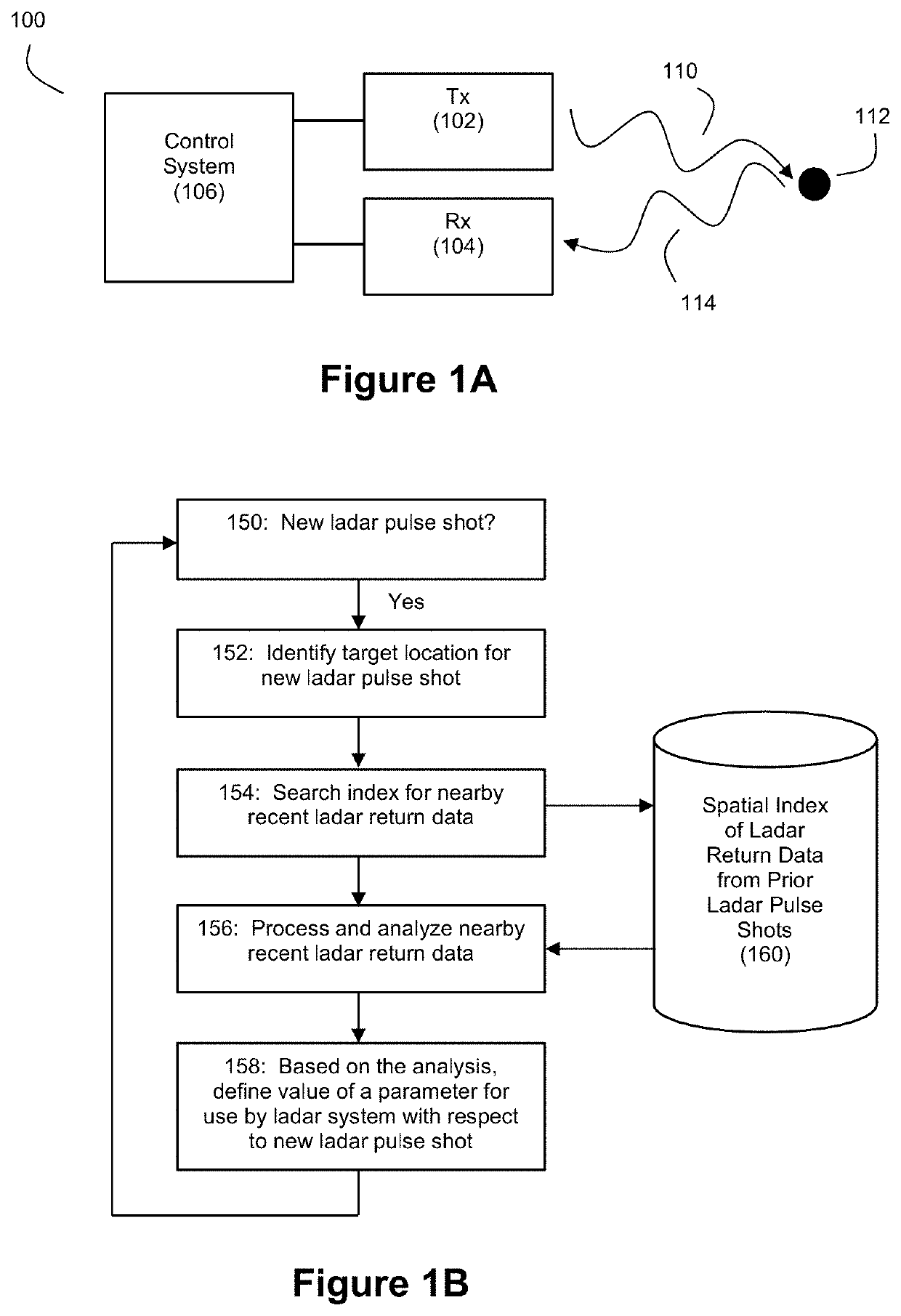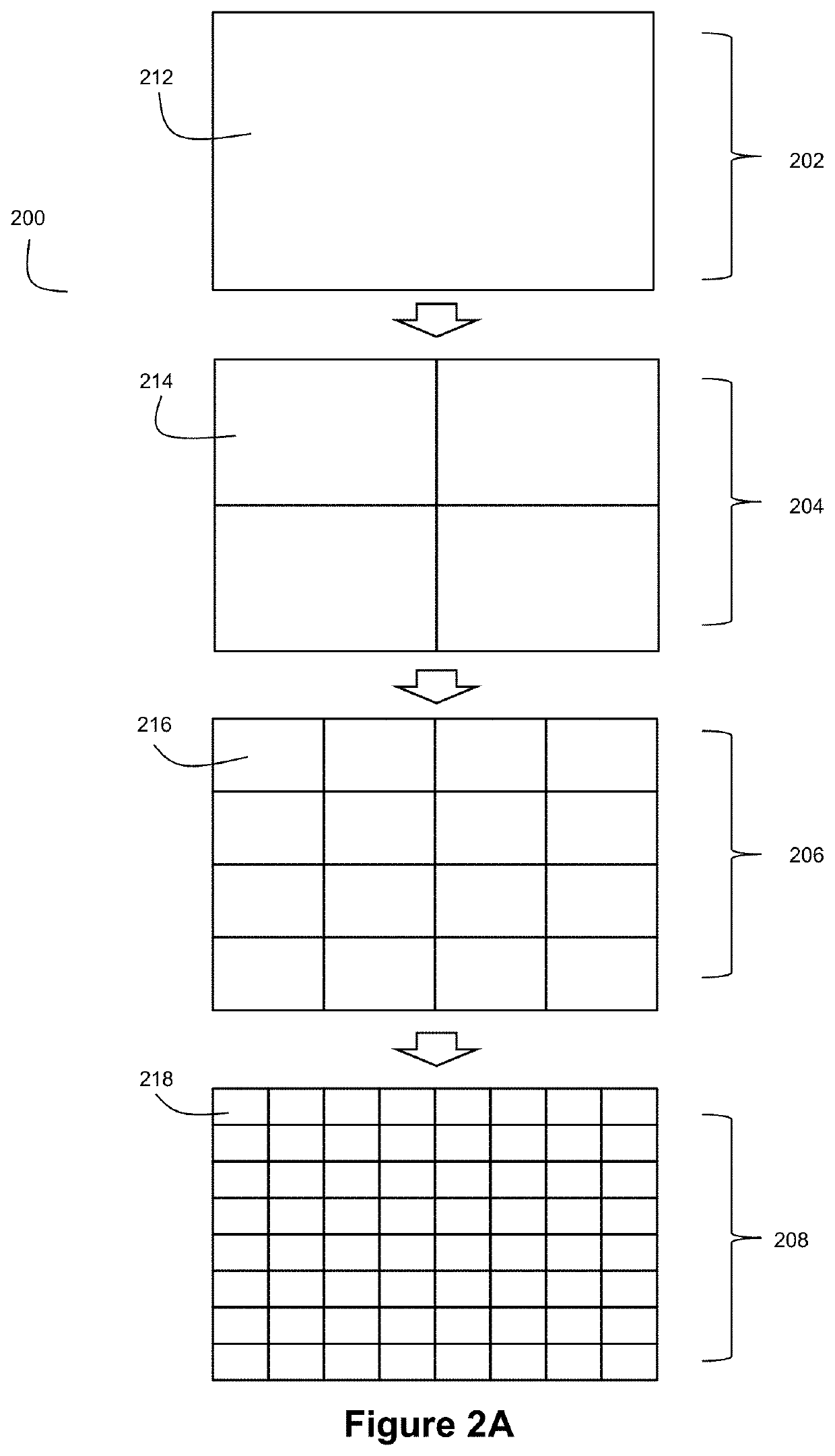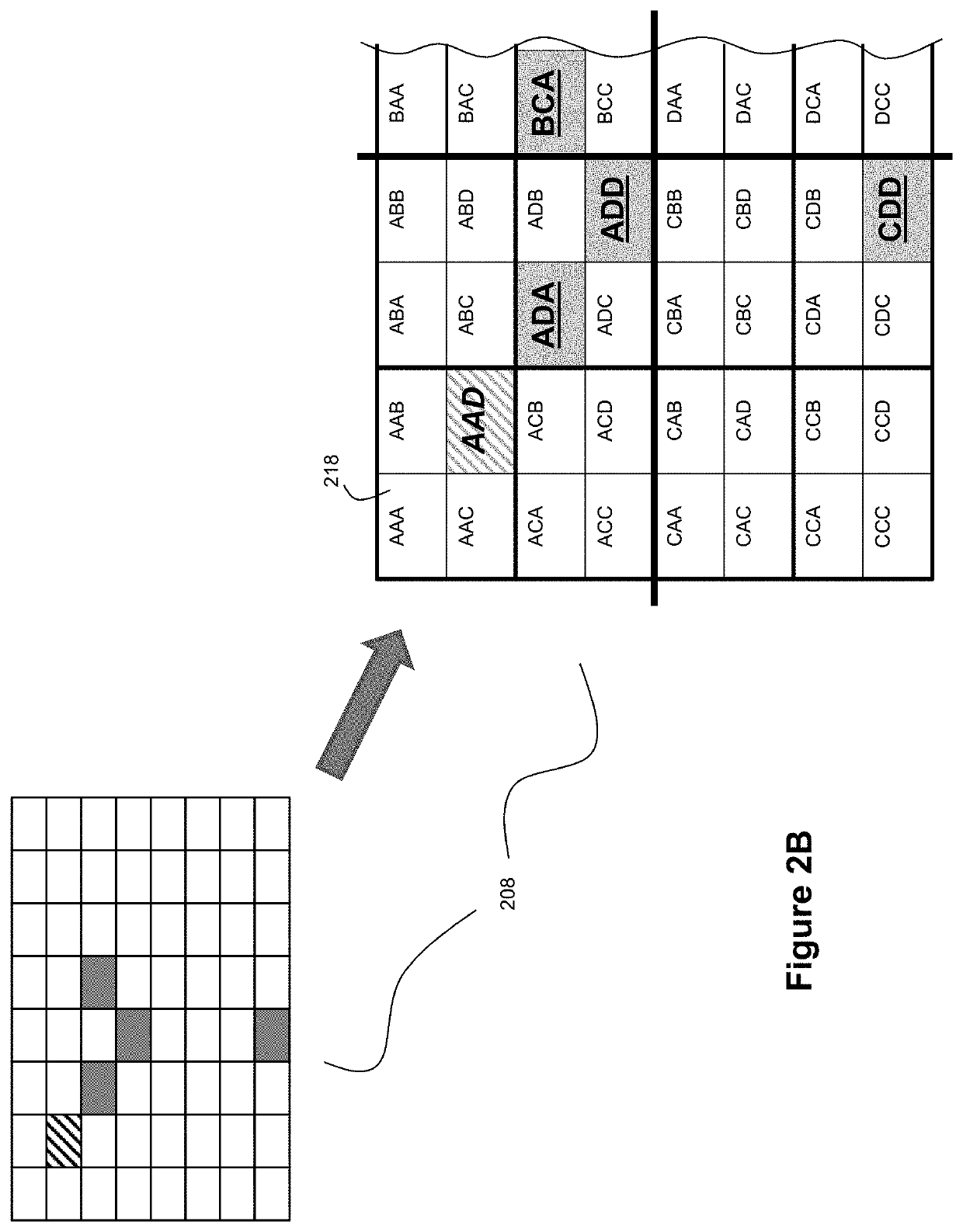Adaptive control of ladar systems using spatial index of prior ladar return data
a technology of spatial index and ladar system, applied in the direction of reradiation, measurement device, instruments, etc., can solve the problems of affecting the accuracy of the analysis operation
- Summary
- Abstract
- Description
- Claims
- Application Information
AI Technical Summary
Benefits of technology
Problems solved by technology
Method used
Image
Examples
example use cases
[0119]The left frame of FIG. 8 shows an example ladar return image 800 that is derived from a ladar system where no adaptive feedback control to achieve a more uniform illumination of the field of view is not employed. Image 800 is a 2D projected image of the intensity map in the ladar point cloud produced by a ladar system lacking adaptive feedback for a given frame. The right frame of FIG. 8 shows a camera image 802 of this same scene. As can be seen in ladar image800, there are several vertical stripes that are present, and these stripes are not present in the environment. Instead, these stripes are due to artifacts in the ladar return data that arise, at least in part, due to non-uniformities in the shot energy of the transmitted ladar pulses.
[0120]By contrast, FIG. 9 shows an intensity map, 3D perspective point cloud where the ladar system employs adaptive feedback control of shot energy using the spatial index 160 and FIG. 3A process flow (left frame) as well as a 2D image of ...
PUM
 Login to View More
Login to View More Abstract
Description
Claims
Application Information
 Login to View More
Login to View More - R&D
- Intellectual Property
- Life Sciences
- Materials
- Tech Scout
- Unparalleled Data Quality
- Higher Quality Content
- 60% Fewer Hallucinations
Browse by: Latest US Patents, China's latest patents, Technical Efficacy Thesaurus, Application Domain, Technology Topic, Popular Technical Reports.
© 2025 PatSnap. All rights reserved.Legal|Privacy policy|Modern Slavery Act Transparency Statement|Sitemap|About US| Contact US: help@patsnap.com



